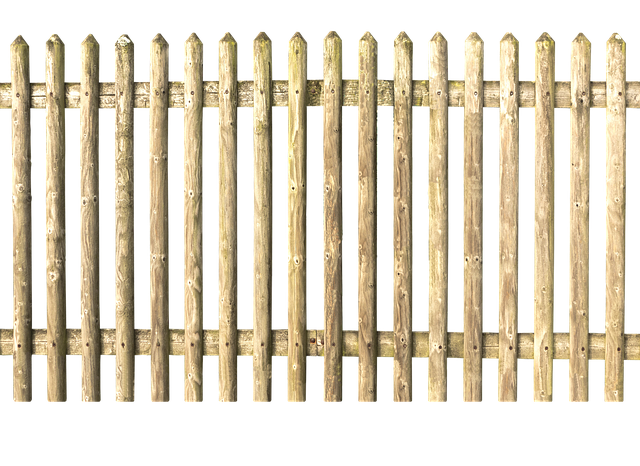Maintaining your New Bedford privacy fence is essential for both aesthetic appeal and functional integrity. This guide equips homeowners with the knowledge to extend the lifespan of their fences, ensuring they remain secure and visually pleasing. By understanding your fence’s unique needs, establishing a cleaning and inspection routine, and tackling key maintenance tasks like repairs and painting, you can protect your investment. Seasonal care tips further ensure optimal performance, while addressing common issues will help determine when replacement is necessary.
- Understanding Your Privacy Fence's Needs
- Regular Cleaning and Inspection Routine
- Key Maintenance Tasks: Repairs and Painting
- Seasonal Care for Optimal Lifespan
- Common Issues & When to Replace
Understanding Your Privacy Fence's Needs
Knowing your privacy fence’s specific needs is crucial for maintaining its integrity and ensuring it serves its purpose effectively. Different types of fences require distinct care routines. For example, wooden fences might need regular cleaning, sealing, and painting to protect against rot and insect damage. On the other hand, vinyl fences are more low-maintenance but should still be checked for cracks or loose panels.
The location of your fence also plays a significant role in its maintenance. Those situated near trees or plants may require more frequent cleaning due to fallen debris, while fences in areas with extreme weather conditions might need additional protection to withstand harsh temperatures and precipitation. Regular inspection and addressing any issues promptly will keep your privacy fence in top condition for years to come.
Regular Cleaning and Inspection Routine
Establish a regular cleaning and inspection routine to ensure your privacy fence remains in top condition. Start by sweeping or vacuuming the fence surface at least once a week to remove any debris, leaves, or grass clippings that can accumulate and cause damage over time. Use a soft-bristled brush or broom to avoid scratching the fence’s finish.
During your monthly inspection, look for signs of wear and tear, such as peeling paint, cracked or broken pickets, or loose joints. Address any issues promptly to prevent them from escalating. Check for loose screws or nails and tighten them using the appropriate tools. Inspect the bottom rail for warping or rot and replace if necessary to maintain the fence’s structural integrity.
Key Maintenance Tasks: Repairs and Painting
Privacy fences, much like any other outdoor structure, require regular care to maintain their functionality and aesthetics. For New Bedford homeowners, keeping your privacy fence in top shape involves a few key maintenance tasks. One of the most important is repairs. Over time, natural wear and tear can lead to damaged panels, posts, or rails. Regularly inspect your fence for loose, broken, or missing components and promptly replace them to prevent further deterioration. Keeping an eye out for signs of rot or pest infestation is also crucial; addressing these issues early can save you from more extensive repairs later on.
Painting is another vital aspect of privacy fence maintenance. A fresh coat of paint not only enhances the visual appeal but also protects the fence from elements like rain, snow, and UV rays, which can weaken the material over time. Before painting, ensure the surface is clean and free from dirt or debris. Regular touch-ups throughout the year can keep your fence looking its best and prolong its lifespan. Remember, a well-maintained privacy fence not only enhances your home’s curb appeal but also provides the peace of mind that comes with knowing your space is secure and private.
Seasonal Care for Optimal Lifespan
Privacy fences, much like any other outdoor structure, require regular care and maintenance to ensure their longevity and protect your privacy. In New Bedford’s varying seasons, these fences face different challenges. During spring, after a long winter, it’s crucial to inspect for any signs of damage or decay, especially in wooden fences. Repairing or replacing damaged sections promptly will prevent further issues.
For optimal lifespan, seasonal care is essential. Summer brings intense sunlight and heat, which can dry out wood and cause cracking. Regular cleaning, sealing, and painting (if applicable) during this season can protect against these effects. In fall, as leaves accumulate, clean the fence to avoid debris buildup, which could block sunlight and affect the fence’s health. Winter’s cold temperatures and snow can be harsh; removing snow promptly and considering insulating materials for wooden fences can help prevent damage.
Common Issues & When to Replace
Privacy fences, while offering a sense of security and seclusion, are not immune to wear and tear. Over time, common issues can arise that may require attention. One of the most frequent problems is rot, which can be caused by exposure to moisture, especially in areas with high rainfall or near bodies of water. This often manifests as soft, crumbling wood, and if left unaddressed, could lead to structural damage and the need for complete replacement.
Another issue is warping or bending due to temperature fluctuations, particularly in regions with extreme weather changes. Metal fences may also suffer from rusting, especially if not properly maintained. Once a fence starts showing these signs of deterioration, it’s a good indication that it’s nearing the end of its lifespan and replacement might be necessary for optimal privacy and security.
